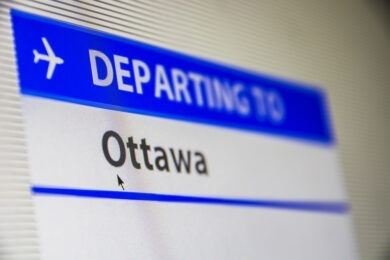Soon, the routine act of presenting a boarding pass and driver’s license at a TSA checkpoint will not be so straightforward, due to impending deadlines associated with the Real ID Act. The act, passed by Congress in 2005, established minimum security standards for state-issued driver’s licenses and identification cards.
Effective Jan. 22, 2018, TSA will only accept identification from Real ID-compliant states, or noncompliant states that have been granted an extension, as proof of identification for domestic air travel. The Department of Homeland Security (DHS) estimates that 90 percent of U.S. drivers hold licenses from jurisdictions that meet these conditions, and therefore may continue to use their state-issued identification.
The remaining 10 percent, including residents of Kentucky, Maine, Minnesota, Missouri, Montana, Pennsylvania, South Carolina and Washington, will need to present an alternate form of identification in order to fly.
Oklahoma’s request for an extension was recently denied, but the state received a grace period that will end on Jan. 29. If its identification cards are not updated to meet Real ID standards by that date, Oklahoma’s ID cards will no longer be accepted.
Acceptable alternate forms of identification include a passport, U.S. military ID and permanent resident card. Find the full list at tsa.gov.
With the Real ID enforcement deadline roughly a year away, TSA has intensified efforts to educate travelers about the upcoming changes. At airports, newly posted TSA signage explains the impending ID policy shift, and the agency’s website features prominent links to Real ID information, FAQs, a fact sheet and a DHS web page offering a state-by-state status breakdown.
To achieve Real ID Act compliance, states must verify the identity of each individual who applies for state-issued identification, utilize anti-counterfeit technology to produce state-issued IDs, and conduct background checks on workers who issue driver’s licenses. So far, barriers to full-scale implementation have included limited legislative sessions, funding issues and, in states such as Montana, opposition based on privacy concerns.
Travelers can expect to hear more about Real ID in the years to come. Beginning October 1, 2020, Real ID-compliant identification will be required for all domestic air travel.




